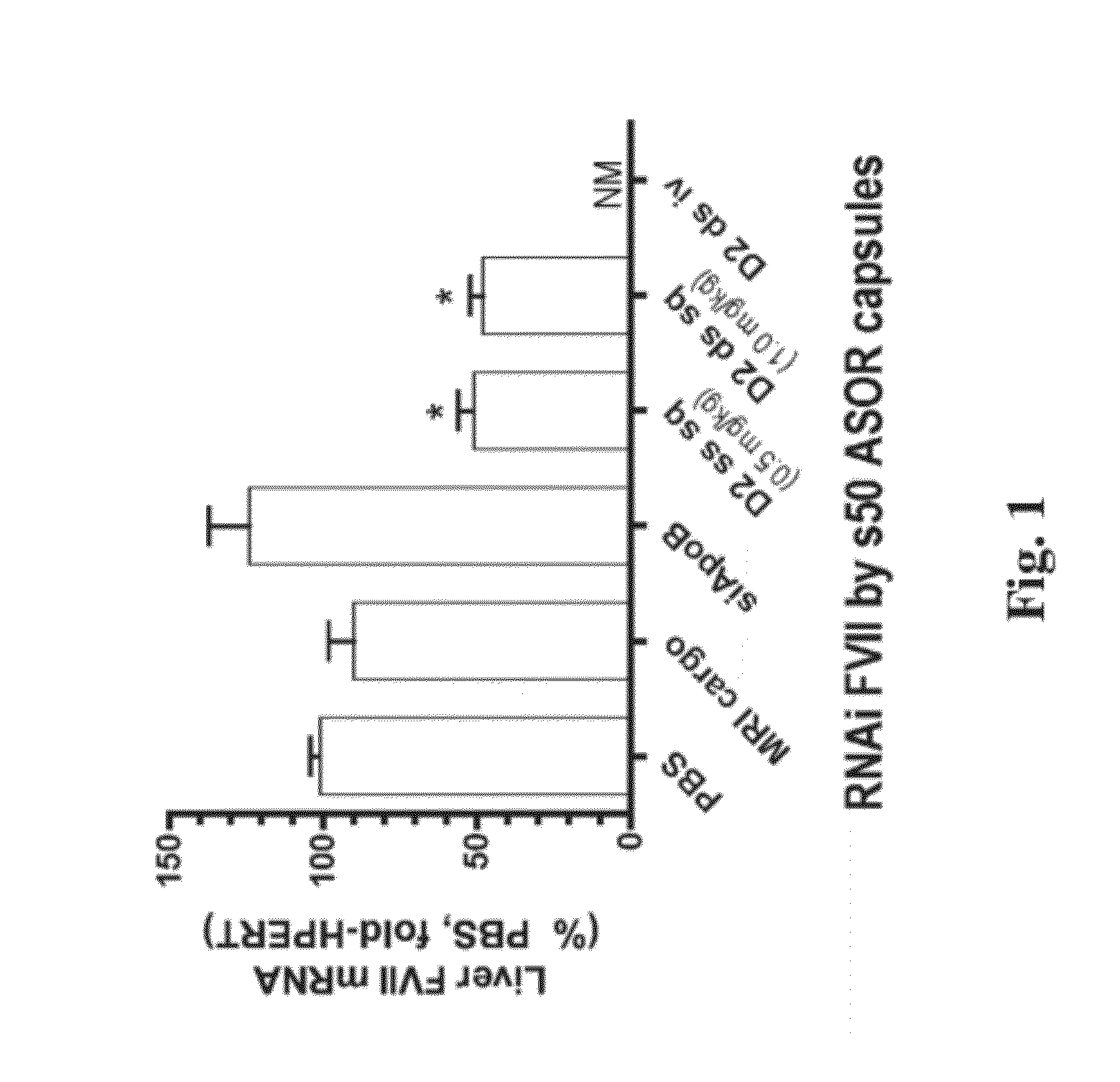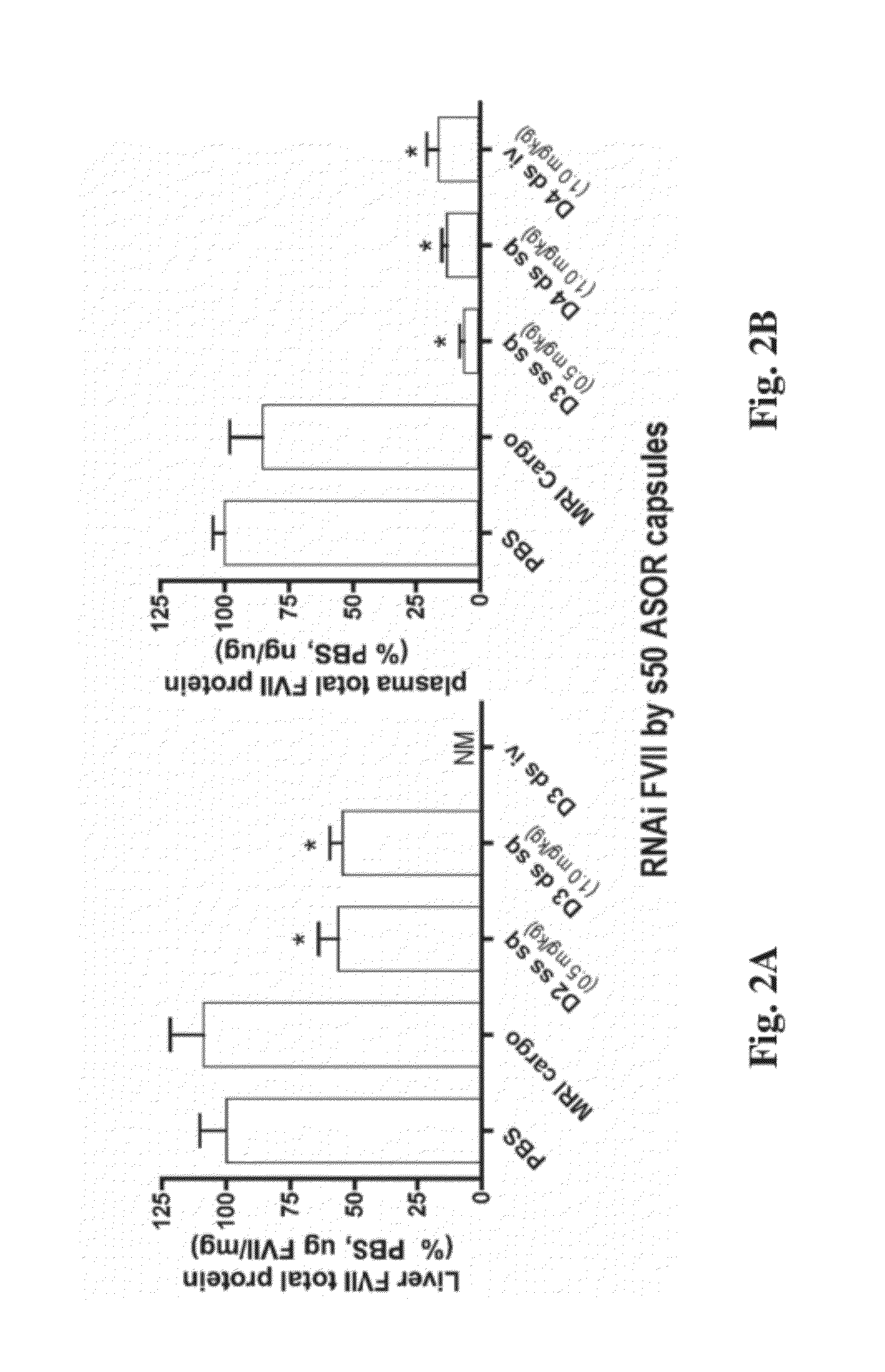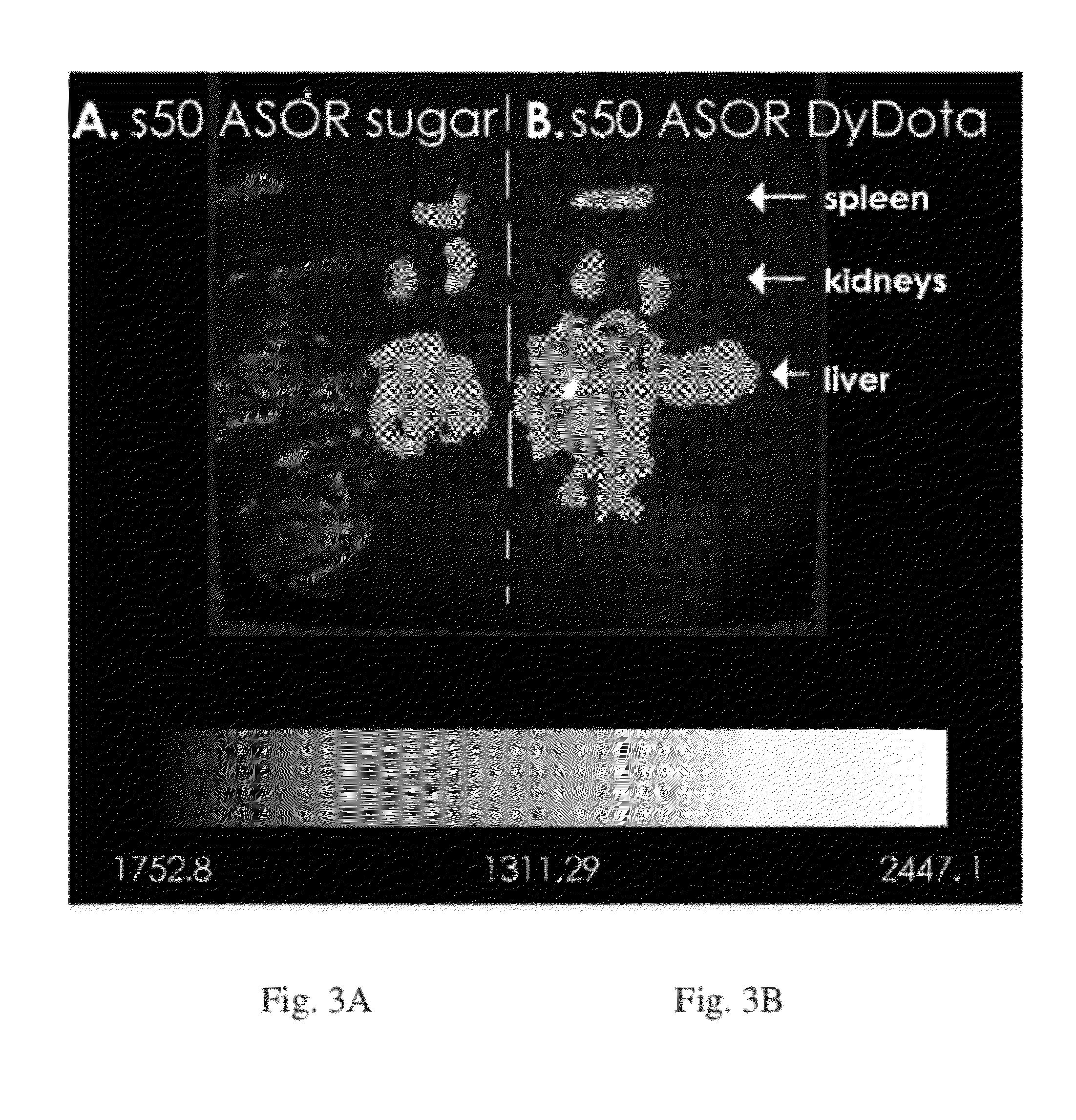Nanoparticles for Extravascular Administration
- Summary
- Abstract
- Description
- Claims
- Application Information
AI Technical Summary
Benefits of technology
Problems solved by technology
Method used
Image
Examples
example 1
Preparation of Dysprosium-Chelated Dextran (DyDex)
[0134]This method is based on a modification of Armitage, F. E. et al., Bioconjugate Chem 1990 1(6):365-374. Using a 10× molar excess of p-SCN-Bn-Dota (Macrocyclics B-205, MW 688, 0.1M in DMSO) to dextran amino groups, react p-SCN-Bn-DOTA with amino-terminated dextran (Invitrogen D1861, 40 KD) in 0.1 M Sodium bicarbonate pH 9.0. Incubate overnight at 25° C. Optionally, in place of p-SCN-Bn-Dota, p-NH2-Bn-DTPA, p-NH2-Bn-DOTA, p-NH2-SCN-DTPA, p-NH2-Bn-NOTA, p-SCN-Bn-oxo-DO3A, p-NH2-Bn-oxo-DO3A, p-NO2-Bn-DTPA, p-NO2-Bn-DOTA, p-NH2-Bn-DOTA (t-Bu-ester), p-NH2-Bn-DTPA(t-Bu-ester) p-SCN-Bn-NOTA, p-SCN-PCTA p-NH2-PCTA, or other similar compositions may be suitable. Calculation of the activated chelate as 90× molar excess on dextran is also acceptable. Dialyze, using a 3500 MWCO cartridge, against 0.1 M Sodium bicarbonate pH 9.0 for 4 buffer exchanges, then against ddH2O for 4 additional exchanges. Following lyophilization, incubate dextran ...
example 2
Preparation of Liver-Targeted Nanoparticles for Subcutaneous Administration
[0135]This example describes how colloidal formulations of diverse cargos and biocompatible polymers may be generated, for subsequent subcutaneous administration. Nanoparticles were prepared by the “dispersion atomization” method described in U.S. Pat. No. 6,632,671, which is incorporated herein by reference in its entirety, with some modifications. Oligonucleotide preparations were synthesized by Dharmacon (Boulder, Colo.; siFVII and siRFP) and Trilink Biotechnologies (San Diego, Calif.; single strand FVII and siAboB).
[0136]Briefly, to prepare each formula below, the following procedures were used:
[0137]Formula A,
[0138]250 μg of 21 mer, unmodified, double-stranded RNA oligonucleotide (siFVII, Akinc, et. al, 2009 Mol Ther 17(5)872-879), was first complexed with 87.5 μg of 300 MW spermine (Sigma), then was dispersed into 100 μl of sterile water using a water-insoluble surfactant system (2, 4, 7, 9-tetramethyl-...
example 3
Knockdown of FVII mRNA and Total Protein in Mice after Single Treatment with ASOR-Coated s50 Capsules Bearing RNAi Cargo
[0163]In an effort to identify administrative routes more amenable than intravenous to chronic administration of nucleic acid and other pharmaceutical agents, C57B / 6 mice of a minimum of 11 weeks were treated with bolus subcutaneous injection of s50 ASOR capsules bearing RNAi oligos in the back of the neck. In order to administer equal amounts of active agent, i.e., antisense guide strand, mice were treated with 10-25 nm s50 ASOR capsules bearing either 1 mg / kg siFVII (Formula A, example 2) or 0.5 mg / kg RNAi FVII, as single-stranded chimeric oligo displaying the antisense guide strand sequence for siFVII (Formula B, example 2).
[0164]Injection volumes were approximately 200 μl. Control formulations consisted of subcutaneous PBS (phosphate-buffered saline, 200 μl), intravenous 1 mg / kg s50 ASOR siApoB (Formula C, example 2) and subcutaneous s50 ASOR capsules bearing D...
PUM
| Property | Measurement | Unit |
|---|---|---|
| Fraction | aaaaa | aaaaa |
| Fraction | aaaaa | aaaaa |
| Mass | aaaaa | aaaaa |
Abstract
Description
Claims
Application Information
 Login to View More
Login to View More - R&D
- Intellectual Property
- Life Sciences
- Materials
- Tech Scout
- Unparalleled Data Quality
- Higher Quality Content
- 60% Fewer Hallucinations
Browse by: Latest US Patents, China's latest patents, Technical Efficacy Thesaurus, Application Domain, Technology Topic, Popular Technical Reports.
© 2025 PatSnap. All rights reserved.Legal|Privacy policy|Modern Slavery Act Transparency Statement|Sitemap|About US| Contact US: help@patsnap.com



